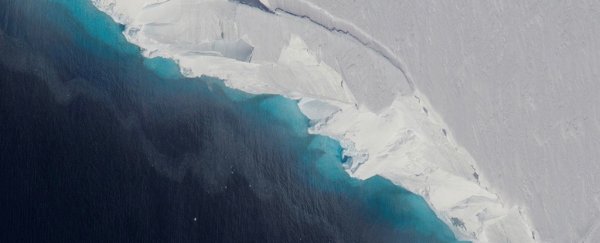The giant West Antarctic Ice Sheet is at a tipping point, scientists have warned, and it's going to take something dramatic to save it from complete collapse – something like blowing 7.4 trillion tons of artificial snow on top of it.
That's the conclusion of a new study into how the destabilisation of the ice sheet could be stopped, but the researchers behind it aren't seriously suggesting it as an option. Instead, they want to highlight the seriousness of what's happening at the South Pole.
The collapse of the West Antarctic Ice Sheet is predicted to lead to sea level rises of around three metres (nearly 10 feet) worldwide, putting cities like New York, Shanghai, Tokyo and Calcutta under threat. The time for significant action is long overdue.
"We are already at a point of no return if we don't do anything," climate scientist Anders Levermann, from the Potsdam Institute for Climate Impact Research in Germany, told Reuters. "We can bring it back to the stable point by a small interference now – or by larger and larger interference later."
Levermann and his team ran the climate models and found that at least 7.4 trillion tons of snow, blasted over the course of 10 years, would be needed to keep the ice sheet protected. That's going to be a lot of snow machines.
The snow would be compacted as ice, pushing down the glacier and stabilising it, as well as making it thicker.
Even that might not be enough however, and would involve some "enormous technical challenges", according to the researchers. Collecting and freezing seawater to deposit on top of the glacier could impact the environment in all kinds of ways we can't even predict. Scientists would also have to be careful to avoid lakes forming on top, which can speed up rather than slow down melting.
Then there's the 'small' matter of providing enough equipment and enough power for the job in one of the harshest environments on our planet. Around 12,000 wind turbines would be needed to provide electricity, the researchers suggest.
If we were to enact such a radical plan, while technically saving the ice sheet, we'd destroy one of the most precious areas of unspoilt wilderness and natural beauty we have left, and cause untold disruption for local wildlife above and below the water.
"I am not proposing to do what we have shown to be possible but that is a decision for society," Levermann told Brian Kahn at Earther. "People have to understand that if we do not want to lose our cities we have to do something. We just laid out one possibility."
A far better idea would be to reduce the global warming that's causing the ice sheets of Antarctica to disintegrate in the first place, and which now means the glaciers at the South Pole are contributing three times as much to sea level rises as they were 25 years ago.
Worldwide carbon dioxide emissions continue to rise, and studies like this new one emphasise just how much damage we've already done to the planet, and what a monumental effort is required to get back to safety.
While geoengineering projects do offer some hope in theory, they could also end up damaging the planet and its ecosystem in unexpected ways, as the researchers point out here.
"The visionary thinking we need most of all is what we can do to take our civilisation off dependence on fossil fuels," planetary scientist Jeffrey Kargel from the University of Arizona, who was not involved in the study, told Reuters.
The research has been published in Science Advances.
